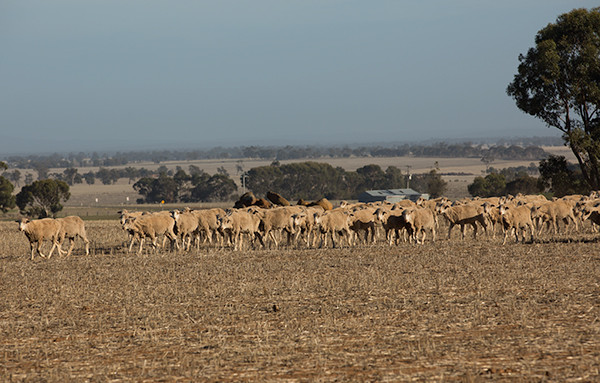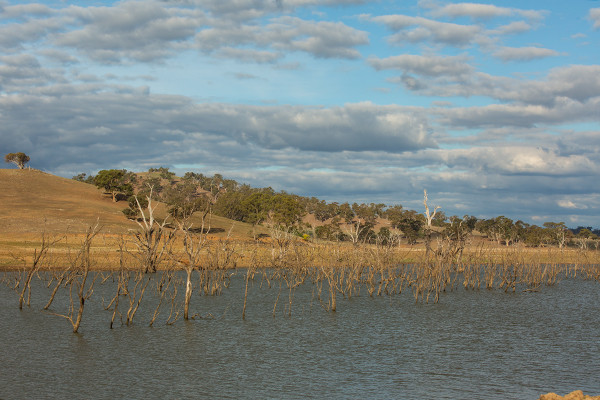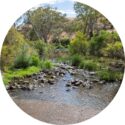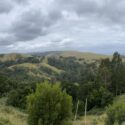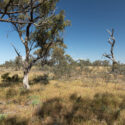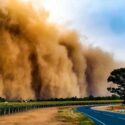Natural Decisions on the road
The Natural Decisions team has been active in recent weeks at a number of conferences and workshops.
Geoff Park recently presented at the National Private Land Conference organised by the Australian Land Conservation Alliance, held in Melbourne on 24/25 November. His talk, “Some thoughts on native vegetation and policy responses”, can be viewed here. Here is an overview of what was covered.
In many parts of the world, natural vegetation has been cleared to allow agricultural production. To ensure a long-term flow of ecosystem services without compromising agricultural activities, restoring the environment requires a balance between public and private benefits and costs. Information about private benefits generated by environmental assets can be utilized to identify conservation opportunities on private lands, evaluate environmental projects, and design effective policy instruments. This presentation highlights a recent study (Polyakov et al. 2015); which found that farmers and other rural landholders, on average, pay more for land that includes a proportion of woody native vegetation on it compared with land that is fully cleared.
The study used a spatio-temporal hedonic model to estimate the private benefits of native vegetation on rural properties in north-central Victoria. Specifically, it involved an estimation of the marginal value of native vegetation on private land and examined how it varies with the extent of vegetation on a property and across a range of property types and sizes. Private benefits of native vegetation are greater per unit area on small and medium-sized properties and smaller on large production-oriented farms. Native vegetation exhibits diminishing marginal benefits as its proportion of a property increases. The current extent of native vegetation cover is lower than the extent that would maximize the amenity value to many landowners.
There is scope for improved targeting of investment in the study region by incorporating private benefits of environmental projects into environmental planning processes. Landowners with high marginal private benefits from revegetation would be more willing to participate in a revegetation program. Targeting these landowners would likely provide higher value for money because such projects could be implemented at lower public cost.
Reference: Polyakov, M., Pannell, D.J., Pandit, R., Tapsuwan, S. and Park, G. (2015). Capitalized amenity value of native vegetation in a multifunctional rural landscape, American Journal of Agricultural Economics 97(1):299–314.
Earlier in November, Geoff and Anna Roberts together with Keri Neilson from Envirostrat Ltd gave a presentation at ERA 2016 – Restoring Resilience across All Environments (19-23 Nov in Hamilton NZ) on “The use of INFFER in the development of the Waikato and Waipa River Restoration Strategy. Here is the abstract …
The Investment Framework for Environmental Resources (INFFER) is a tailor-made benefit:cost analysis approach to help people determine whether their environmental/natural resource projects will deliver tangible results within budget. It incorporates consideration of the full range of benefits (values), cost and risks associated with the design and implementation of environmental projects. Its development was motivated by poor environmental decision-making in Australia. Over the past two years INFFER has been adapted for use in a Waikato context, and is being used to prioritise projects and assess their overall benefits and costs as part of the development of the Waikato Waipa River Restoration Strategy. The development of the Strategy is a partnership between Waikato Regional Council, DairyNZ and the Waikato River Authority, and its intent is to guide future ‘on the ground’ activities for all organisations undertaking restoration in the Waikato and Waipa River Catchments. A key driver in adapting INFFER to the New Zealand context and for use in the development of the River Restoration Strategy has been to better incorporate iwi values in project assessment and prioritisation, and in particular to assess the potential impact of projects on achieving the Vision and Strategy for the Waikato River. The process has involved stakeholders understanding the concepts behind benefit:cost analysis, gaining confidence that the approach will work and conducting workshops with iwi, communities, industry, local and central government and technical specialists. To date close to 40 projects in the Waipa catchment have been prioritised and assessed in terms of their benefits and costs. The projects are broad ranging including protection and restoration of significant catchments and waterways, taonga species and underrepresented habitat types, and enhancing access and connection of iwi and communities to the river.
On 11th November 2016 Anna Roberts attended the National Water Forum in Adelaide organised by the University of South Australia. Anna was invited to chair the session on ‘Environmental Water’. To view the presentations from the forum click here.
Posted 12 December 2016 in News















